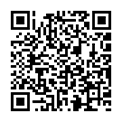 |
編目園地推出LINE服務囉! 歡迎掃描QR Code立即加入編目園地的LINE@帳號, 每月編目園地的更新內容、國內外資訊組織報導等訊息將一次提供給您! |
-
資訊組織活動
-
「109年圖書館資訊組織基礎訓練研習班」即將於8月開班
-
由中華民國圖書館學會、國家圖書館合辦的「109年圖書館資訊組織基礎訓練研習班」將於今年的 8/7 (五)、8/14 (五)、8/21 (五) 及8/28 (五) 在國家圖書館文教區421教室舉行。
本次課程內容包括:
(一) 資訊組織概論;
(二) 記述編目 (含編目規則、機讀格式及其應用);
(三) 各資源書目實例分析與實作;
(四) 編目資源應用;
(五) 檢索點與權威控制;
(六) 主題分析(含分類法、主題法及其實作)。
為維護講師及參與學員之健康,並於教室內保持較寬裕之社交距離,本次招生名額上限調降為40名,目前尚有名額,歡迎有興趣的同道於 7/17 (五) 之前,到圖書館學會報名系統報名,如報名額滿,將提前截止。報名網址為:http://lac4.glis.ntnu.edu.tw/LacEduMember/
完成本次研習課程者,將可取得2張證書,分別為:
1) 中華民國圖書館學會所頒發之研習結業證書:請假時數不超過4小時,即可取得,於結業當天頒發。
2) 師大非正規教育1學分的學分證明書:請假時數不超過4小時,且須修業成績達60分以上 (含出席成績 40%、綜合測驗成績 60%),於研習班結束,成績核算完成後,以郵遞方式寄送。
詳細課程表、講師陣容及簡章請參見附檔。
誠摯歡迎有興趣的同道與我們一起學習編目新知!
-
-
編目園地快報
-
面對疫情, 圖書館如何進行館藏消毒及相關資源
-
面對 COVID-19 ,如何保護讀者和館員的健康及安全,在疫情趨緩的當下仍然是不可忽略的工作;如何落實,尤其是針對館藏物件的表面消毒清潔,亦不是很容易的一件事情。
american libraries 六月號刊載了文物專家館及圖書館館員的幾個建議:
- 進行空間消毒工作時,特別注意容易忽略的死角。視聽器材的 3D眼罩,耳機,電腦螢幕、鍵盤,、滑鼠,觸控或公共展示螢幕等等。
- 消毒以避免造成損傷為第一優先。如果要針對圖書進行消毒時,特別注意不同的溶液可能對圖書材質造成的影響。文物,特藏,珍貴物件在未獲得專家指點之前,千萬不要逕行消毒也不要用紫外線消毒。
- 館員在接觸物品之前和之後都應該徹底洗手。
相關的資源
- ALA 建立的 圖書館如何面對疫情的資源
- ALA 的 圖書館館藏與技術服務協會 所提供的 疫情時期物件處理指南
- Northeast Document Conservation Center 提出的 消毒最佳實務指南
- 美國麻省圖書館委員會提供的 COVID-19 圖書館應對指南
- 美國 國家公園管理局的全國保存科技中心提供的文物消毒教學錄影
-
更新國家圖書館學位論文相關代碼表
-
更新 國家圖書館學位論文學校及系所(新增9校;修改1校)
新增 國家圖書館學位論文系所名稱或代碼新增、修訂一覽表(109年06月)
-
-
資訊組織文獻
-
Person Identifiers in MARC 21 Records in a Semantic Environment
-
This article discusses how libraries can include person identifiers in the MARC format. It suggests using URIs in fields and subfields to help transition the data to an RDF model, and to help prepare the catalog for a Linked Data. It analyzes the selection of URIs and Real-World Objects, and the use of tag 024 to describe person identifiers in authority records. When a creator or collaborator is identified in a work, the identifiers are transferred from authority to the bibliographic record. The article concludes that URI-based descriptions can provide a better experience for users, offering other methods of discovery.
-
The Use of Linked Data and Artificial Intelligence as Key Elements in the Transformation of Technical Services
-
Library Technical Services have benefited from numerous stimuli. Although initially looked at with suspicion, transitions such as the move from catalog cards to the MARC formats have proven enormously helpful to libraries and their patrons. Linked data and Artificial Intelligence (AI) hold the same promise. Through the conversion of metadata surrogates (cataloging) to linked open data, libraries can represent their resources on the Semantic Web. But in order to provide some form of controlled access to unstructured data, libraries must reach beyond traditional cataloging to new tools such as AI to provide consistent access to a growing world of full-text resources.
-
Big Questions: Digital Preservation of Big Data in Government
-
Big Data is becoming a key part of transactions and decision-making processes, and archivists are increasingly called to intervene in its management. This article examines the digital preservation needs of government Big Data from the perspective of archival theory. While Big Data presents unique challenges, particularly in the areas of record capture, access, and privacy, it is nonetheless becoming a key component of modern government recordkeeping. Managing both the technical and ethical aspects of Big Data is essential, with each requiring specific consideration. Taking a systems-level view of Big Data by attempting to capture instances of bounded variability may be one path forward, and technical tools and systems can successfully manage such large volumes of information. However, ultimately, as with all digital preservation initiatives, proper documentation is key. Creating appropriate metadata to capture the identity, technical characteristics, and management actions for Big Data must include the multiprovenancial origins of such data sets. More broadly, Big Data reminds archivists of their larger responsibilities. Recognizing the power dynamics in Big Data requires an interrogation and documentation of the data themselves, as well as of the ways in which governments and corporations use them. Digital preservation must balance technical knowledge with critical perspectives to truly capture the context of Big Data and the records it produces.
-
Book Review: The Digital Archives Handbook: A Guide to Creation, Management, and Preservation
-
The Digital Archives Handbook seeks to provide practitioners with the “who, what, and how of digital archives” (p. xx). Bringing together archivists and experts, Aaron D. Purcell has created a guide on how to handle digital archives. The volume is divided into two sections, the first addressing practices and processes and the second detailing specific types of materials and archival environments. Functional aspects of digital archives, such as infrastructure, access, donors and deeds of gift, institutional commitment, and researchers' needs, are illustrated with real-world examples. Each of the ten chapters in the book is written by a practitioner or expert who has hands-on experience with digital archives. Much like Purcell's book about donor relations, Donors and Archives: A Guidebook for Successful Programs (Rowman and Littlefield, 2015), this volume is intended to be a practical guide to help archivists begin managing digital archives and not stay mired in theory or presumptions of ideal situations.
-
Comparison of bibliographic data sources: Implications for the robustness of university rankings
-
Universities are increasingly evaluated on the basis of their outputs. These are often converted to simple and contested rankings with substantial implications for recruitment, income, and perceived prestige. Such evaluation usually relies on a single data source to define the set of outputs for a university. However, few studies have explored differences across data sources and their implications for metrics and rankings at the institutional scale. We address this gap by performing detailed bibliographic comparisons between Web of Science (WoS), Scopus, and Microsoft Academic (MSA) at the institutional level and supplement this with a manual analysis of 15 universities. We further construct two simple rankings based on citation count and open access status. Our results show that there are significant differences across databases. These differences contribute to drastic changes in rank positions of universities, which are most prevalent for non-English-speaking universities and those outside the top positions in international university rankings. Overall, MSA has greater coverage than Scopus and WoS, but with less complete affiliation metadata. We suggest that robust evaluation measures need to consider the effect of choice of data sources and recommend an approach where data from multiple sources is integrated to provide a more robust data set.
-
國家圖書館編目園地電子報 第232期 2020/07/01發行
編輯:國家圖書館館藏發展及書目管理組
創刊日期:2001/4/2
本報著作權屬「國家圖書館」所有
服務信箱:catadm@ncl.edu.tw